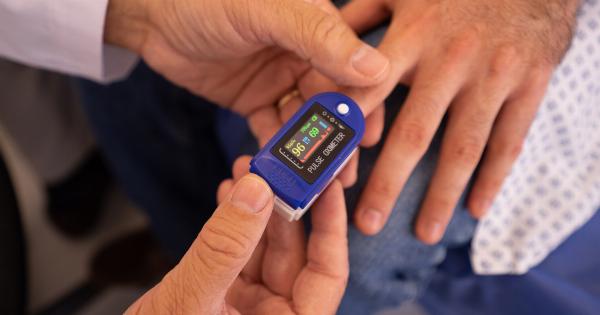A new test has been developed which can detect serious diseases in small blood vessels. This test has the potential to revolutionize the way doctors diagnose and treat vascular diseases such as diabetes, hypertension, lupus, and atherosclerosis.
The test works by measuring the levels of molecules in the blood which are released when there is damage to the endothelial cells which line the inside of blood vessels.
What is the Endothelium?
The endothelium is a layer of cells that lines the interior surface of blood vessels, lymphatic vessels, and the heart. It acts as a barrier between circulating blood and the rest of the vessel wall.
The endothelium plays a crucial role in maintaining vascular homeostasis, regulating vasomotor tone, preventing thrombosis and inflammation, and controlling permeability. The endothelial cells produce a variety of molecules including nitric oxide, prostacyclin, and endothelin-1 which help to regulate blood flow and blood pressure.
Endothelial Dysfunction
Endothelial dysfunction is a term used to describe the impairment of endothelial function, which can lead to an increased risk of developing cardiovascular disease.
Several factors can cause endothelial dysfunction, including high blood pressure, diabetes, smoking, high cholesterol, and inflammation. When the endothelium becomes damaged, it produces less nitric oxide and other protective molecules and more vasoconstrictive, inflammatory, and procoagulant molecules such as endothelin-1 and plasminogen activator inhibitor-1.
This imbalance can lead to vasoconstriction, inflammation, and thrombosis in the vessel wall, which can ultimately lead to the development of cardiovascular disease.
Current Diagnosis and Treatment of Vascular Diseases
Currently, diagnosis of vascular diseases such as diabetes, hypertension, lupus, and atherosclerosis is often based on measuring blood pressure, blood glucose, and other biomarkers.
Imaging techniques such as ultrasound, computed tomography (CT), magnetic resonance imaging (MRI), and angiography can also be used to visualize the structure and function of blood vessels. Treatment of vascular diseases typically involves controlling risk factors such as blood pressure, blood glucose, and cholesterol levels, as well as lifestyle modification and medication.
However, current treatment options are often limited by the lack of targeted therapies and the inability to identify and treat early stages of disease before irreversible damage has occurred.
The New Test
The new test measures the levels of molecules called circulating endothelial microparticles (EMPs) in the blood. EMPs are small vesicles that are shed from damaged endothelial cells and circulate in the blood.
The test works by using a fluorescent antibody to label EMPs and then measuring the fluorescence using a flow cytometer. The test is non-invasive and can be performed using a small blood sample.
Preliminary studies have shown that the test is highly sensitive and specific for detecting early endothelial damage in patients with vascular diseases such as diabetes, hypertension, and atherosclerosis.
Potential Applications of the Test
The new test has several potential applications in the diagnosis and treatment of vascular diseases. Firstly, it can be used as a screening tool to identify patients who are at risk of developing vascular disease before symptoms appear.
This would allow for earlier intervention and treatment, which could prevent or reduce the severity of the disease. Secondly, the test can be used to monitor disease progression and response to treatment. By measuring changes in EMP levels over time, doctors can determine whether treatment is working and make adjustments as necessary.
Thirdly, the test can be used to develop new targeted therapies for vascular diseases. By identifying the specific molecules released by damaged endothelial cells, researchers can develop new drugs that target these molecules and prevent or reverse endothelial dysfunction.
Conclusion
The new test for detecting serious diseases in small blood vessels has the potential to transform the way that doctors diagnose and treat vascular diseases such as diabetes, hypertension, lupus, and atherosclerosis.
By measuring levels of circulating endothelial microparticles, the test can detect early damage to the endothelium, which can lead to earlier intervention and treatment and the development of targeted therapies. This could ultimately reduce the burden of vascular disease and improve outcomes for patients.

























